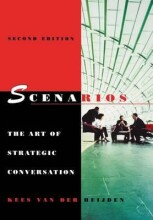Summary: The Economic Foundations Of Theories In Strategy
- This + 400k other summaries
- A unique study and practice tool
- Never study anything twice again
- Get the grades you hope for
- 100% sure, 100% understanding
Read the summary and the most important questions on The economic foundations of theories in strategy
-
1.1 The economic foundations of theories in strategy
This is a preview. There are 53 more flashcards available for chapter 1.1
Show more cards here -
How can the Neoclassical theory of perfect competition inform theories of competitive advantage?
..... -
What can you infer from the theories discussed by Conner (1991) about:a. The nature of the firmb. The causes of differences in performance among firms?c. The role of managers in improving the firm's performance?
.... -
What is meant with the analytical skills of strategic management?
- unstructured problems
- Double 'T-profile'
-
What is the definition of CA of Rumelt, 2003?
- Has something to do with advantage over competitors
- Has something to do with differential performance
- Has something to do with creating value
-
What are the 6 PIMS principles?
- In the long run, the most important factor affecting performance is the relative quality of an SBU's products and services.
- Market share and profitability are strongly related
- High investment intensity acts as a powerful drag on profitability.
- Many 'dogs' and 'question marks' generate cash while many 'cash cows' are dry.
- Vertical integration is a profitable strategy for some businesses, but not for others.
- Most of the factors that boost ROI (=return on interest) also contribute to long- term value.
-
What does Porter's 5 forces model looks like?
Potential entrants (threats of new entrants)
Buyers ( Bargaining power of buyers)
Substitutes ( threat of substitute products or services)
Suppliers (Bargaining power of suppliers)
Middle position: Industry competitors and Rivalry among existing firms
--> This model isn't a theory, it is a framework/tool. There is still a lot of theory behind it.
-
Peters and Waterman (1982): What do they consider as CA due to their tekst in "In search of excellence"?
- A bias for action
- Close to the customer
- Autonomy and entrepreneurship
- Productivity through people
- Hands-on, value driven
- Stick to the knitting
- Simple form, lean staff
- Simultaneous loose-tight properties
-
Which three layers of theory do we have?
- Management
- Strategic Management
- Economics
-
Which five school of thoughts are there?
- The Design School - 1960s
- The Planning School - 1970s
- The Positioning School - 1980s
- The Resource-Based School - 1990s
- The Process School - 1980s and onwards.
-
Which two types of strategies are there?
- Corporate strategy
- Competitive strategy --> main focus of the course
- Higher grades + faster learning
- Never study anything twice
- 100% sure, 100% understanding































